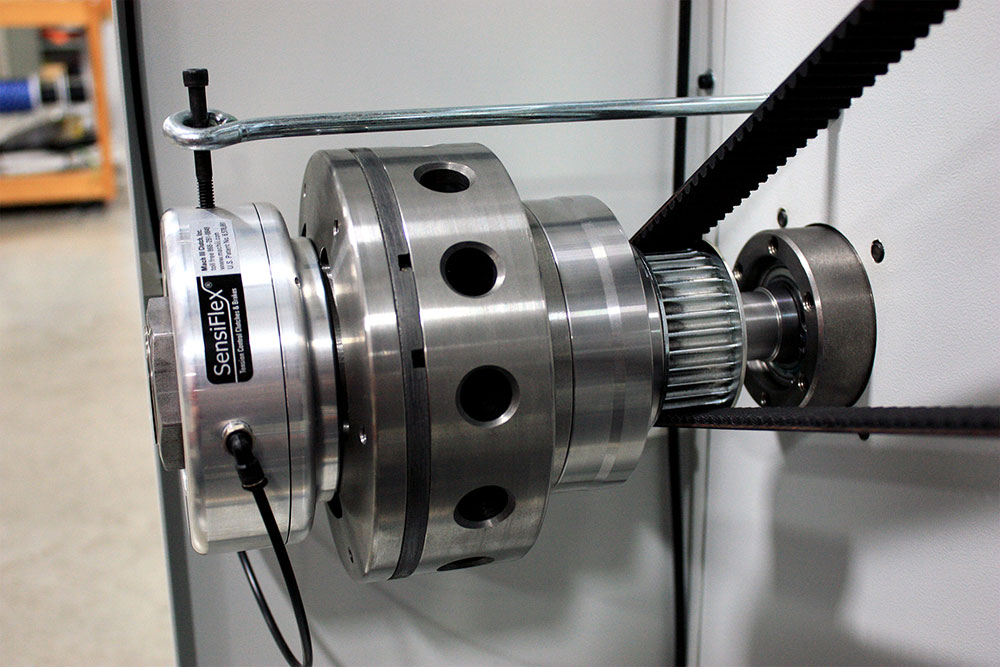“How long will it last?” It’s often the first question we’re asked when helping our customers specify a friction clutch or brake. And the answer is always, “It depends.” We’ve seen severe applications where clutches and brakes require replacement wear parts after a few weeks and other applications where they last decades with no maintenance at all.
If you want to maximize the service life of friction clutches and brakes in your industrial machines, here’s an overview of the design, installation and maintenance factors you should keep in mind:
 Start with the application details. The most important factor in assuring the maximum service life of a clutch or brake is choosing the right unit for the job based on application details such as cycle rates, revolutions per minute and the torque needed to drive or stop the load. For selection assistance, it’s a good idea to ask for a review by an application engineer at your clutch or brake manufacturer.
Start with the application details. The most important factor in assuring the maximum service life of a clutch or brake is choosing the right unit for the job based on application details such as cycle rates, revolutions per minute and the torque needed to drive or stop the load. For selection assistance, it’s a good idea to ask for a review by an application engineer at your clutch or brake manufacturer.
Factor in safety. When sizing a friction clutch or brake, add torque service factor to ensure the clutch or brake will have the required torque to drive or stop the load. A service factor of 1.5 to 2 — or 50 to 100 percent more torque than required — is recommended by most clutch and brake manufacturers.
Follow the speed limits. Adhere to the manufacturer’s maximum RPM rating, because excessively high RPM can significantly reduce the life of clutch and brake components such as bearings and linings. The wear effects of rotational speed are particularly pronounced in high-cycle applications. Larger clutches may need precision balancing.
Get some clean air. The quality of compressed air affects the service life of clutches and brakes. It’s important to use only filtered air to eliminate particulate contamination, which can result in worn sealing components and hinder proper cycling of cylinder-piston assemblies. And air needs to be regulated to match supply and demand. If a clutch or brake does its job at 50 psi, don’t operate it at 80 psi. Using the lowest workable pressure will maximize bearing life. Also, if a clutch is transmitting more torque than necessary, the unit may overdrive the system further down the drive train, leading to the breakage or wear of other machine components.
Tip: Periodically readjust air pressure during the wear-in of a new clutch or brake.
Install it right. Following installation instructions is a critical factor in assuring maximum wear life. Common mistakes include mounting the clutch or brake in the wrong orientation and incorrectly installing anti-rotational restraints so that they apply axial force to a clutch, inducing bearing or lining wear. Misalignment in shaft-to-shaft applications can impair clutch or brake function and cause premature wear. If both angular and offset alignment of the shafts cannot be achieved, a flexible coupling is recommended.
Keep chains and belts in order. Chains and belts that are poorly aligned or tensioned are another source of wear and service-life reduction. Chain misalignment, for example, can cause bearing and bushing wear in the pilot of a clutch or clutch-brake. It can also cause sprocket wear. And some misalignment scenarios can result in the clutch moving axially, potentially allowing it to walk off the shaft. Excessive chain or belt tension likewise causes pilot-bearing and sprocket wear — and can allow clutches to continue to be driven when disengaged.
Environment matters. Friction clutches and brakes run best when free from contamination — whose sources include lubricants, brake cleaners, solid particulate and moisture. All of these contaminants can contribute to premature wear or even reduced functionality. For example, contaminants on a clutch drive surface may prevent the unit from full engagement, which can lead to wear and inconsistent torque output. Contact your clutch or brake manufacturer for advice on units that must run in particulate or moisture rich environments. Covered and sealed units that will shield against these contaminants are often available.
Take care of your clutches and brakes. Periodically inspect all your clutches, brakes and combination clutch-brakes for wear. Friction linings will need replacement at a frequency determined by the demand of your application. Repair kits are generally available and contain replacement friction linings along with other typical wear parts such as springs and seals.
For more information on extending the life of your bearings and clutches, download our technical article.